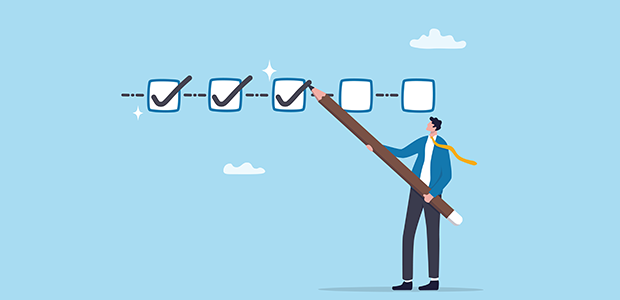
Efficiency vs effectivity: what startups need to know
Efficiency vs effectivity is a distinction every founder should understand early on. When building a startup, it’s tempting to measure success by how quickly things get done or how many tasks are completed in a day. Yet speed and activity are not the same as progress.
Founders can often fall into the trap of celebrating efficiency (doing things in the least amount of time and with the least resources), while overlooking effectivity (doing the right things to move the business forward).
Being able to understand the distinction between efficiency and effectivity is critical for early-stage businesses that are operating with limited resources. Both matter, but not in equal measure at every stage of growth.
Defining the terms
Efficiency means achieving maximum output with minimal wasted effort, cost, or time. For example, automating customer support responses so one person can handle 100 queries instead of 10.
Effectivity means achieving the desired result by focusing on the right goals and actions. For example, ensuring customer support not only responds quickly but also resolves issues in a way that improves retention.
In short: efficiency is about how you work, effectivity is about what you work on.
Why effectivity comes first
Startups consistently face a range of constraints, from capital, to talent acquisition, to time. In the earliest stages, pursuing efficiency without effectivity risks scaling the wrong thing. Automating a flawed onboarding process, for instance, only helps the business lose customers faster.
Effectivity ensures that the startup is solving the right problems, serving the right market, and creating genuine value. Once that foundation is secure, efficiency becomes a powerful multiplier.
Think of it as a sequence:
- Be effective first: validate that you are building the right product for the right customers
- Be efficient later: optimise delivery, reduce waste, and scale what works
A practical framework for founders
To balance the two, founders can adopt a three-step approach:
- Set priorities around effectivity: define what outcomes matter most right now – customer retention, product-market fit, or recurring revenue
- Measure impact before speed: track metrics tied to results (customer satisfaction, revenue growth) rather than just activity (emails sent, meetings booked)
- Layer in efficiency: once the approach proves effective, apply tools, automation, or process improvements to reduce cost and time
Case in point
Consider a startup that rushed to automate its sales outreach. It sent thousands of cold emails daily (efficient), but conversion rates were poor because the messaging did not resonate with the target market (ineffective). By refocusing on effectivity – testing different pitches, refining the value proposition, and identifying high-potential customer segments – the business eventually found what worked. Only then did scaling and automation pay off.
The founder’s takeaway
In a startup environment, effectivity drives direction, while efficiency accelerates momentum. Prioritise effectivity in the early days, then pursue efficiency once the business model shows traction.
The distinction can be summed up as:
- Efficiency without effectivity is wasted effort
- Effectivity without efficiency is unsustainable
For founders, the challenge is not choosing one over the other but knowing which to emphasise at the right stage of growth.
For more startup news, check out the other articles on the website, and subscribe to the magazine for free. Listen to The Cereal Entrepreneur podcast for more interviews with entrepreneurs and big-hitters in the startup ecosystem.

